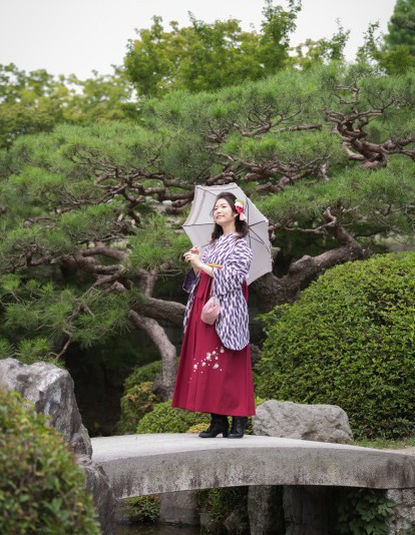In the Meiji and the Taisho era, HAKAMA (divided skirts worn over KIMONOs) was a standard outfit for female students.
The root of HAKAMAs can be seen on HANIWAs (ancient terracotta figures from the Kofun period) wearing HAKAMAs which are more like broad pants. In the Heian era, noble women wore HAKAMAs under JUNI-HITOE (12 layered KIMONO).
Back in the days of SAMURAI, HAKAMAs were used as dress uniforms for SAMURAI worriers. In the Edo era, women were banned to wear HAKAMAs by the strict regulations according to titles and the gender. Maids at the Imperial Court were the only exception.
As Western culture was introduced in the Meiji era, teachers and students began to wear Western clothes. Along with that, people started to wear HAKAMAs which provide more comfortable movement than KIMONOs.
Girls in HAKAMAs became a symbolic icon of the new era, however, as sailor collared uniforms came into fashion, HAKAMAs began to regarded as old-fashioned.
Today, HAKAMAs, extremely popular only during the Meiji and the Taisho era, has once again become a standard outfit for female students' graduation ceremonies. The time goes around, indeed.
Click here to see a Blog by a Former MAIKO, "Do You Know?"


Comments